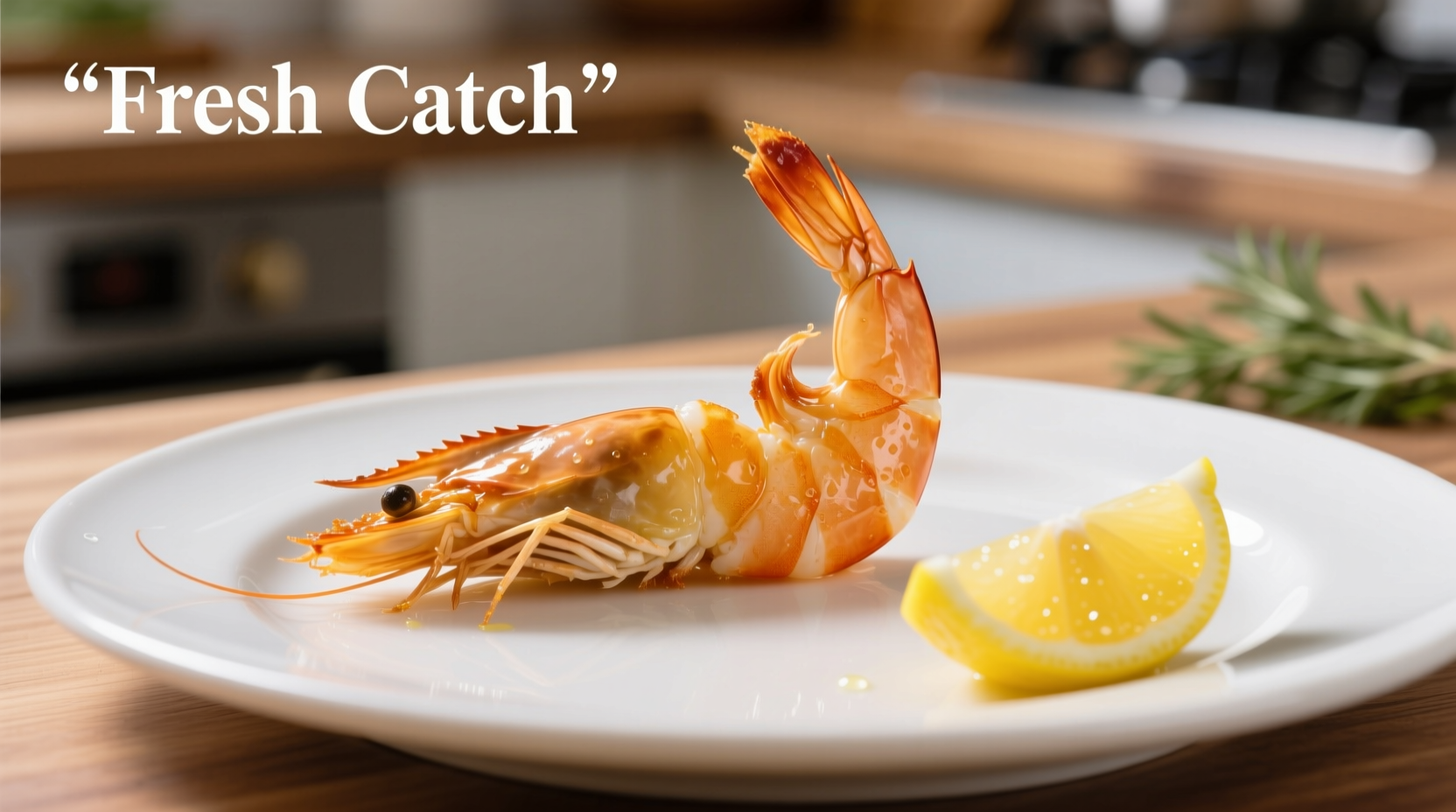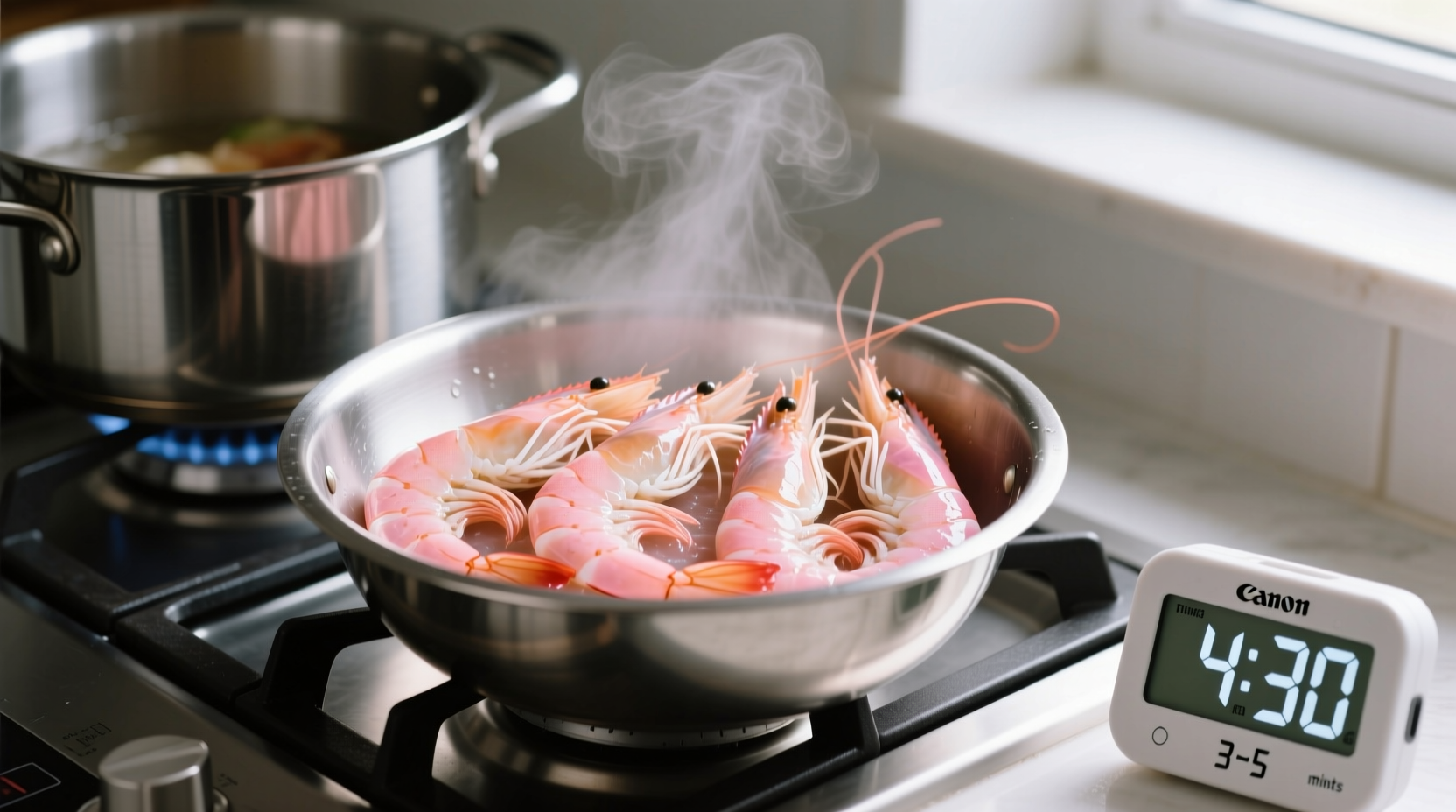Shrimp typically cooks in 1-5 minutes depending on size and method. Small shrimp need just 1-2 minutes boiling or sautéing, medium 2-3 minutes, and large/jumbo 3-5 minutes. Overcooking makes shrimp tough - watch for the "C" shape and opaque pink color as your visual doneness cues.
Getting shrimp cooking time right separates restaurant-quality results from rubbery disappointment. Whether you're boiling, sautéing, grilling, or baking, precise timing ensures tender, flavorful shrimp every time. This guide delivers exact cooking times based on professional chef techniques and food science principles - no guesswork required.
Why Shrimp Cooking Time Matters More Than You Think
Shrimp's delicate texture transforms dramatically in seconds. Undercooked shrimp risks foodborne illness, while overcooked shrimp becomes tough and chewy. The narrow window between perfect and ruined makes timing critical. According to the FDA Food Code, shrimp must reach 145°F (63°C) internal temperature for safety, but visual cues matter more in practice since inserting a thermometer can damage delicate shrimp.
| Shrimp Size | Count per Pound | Boiling Time | Sautéing Time | Grilling Time |
|---|---|---|---|---|
| Extra Small | 61-70 | 1-1.5 min | 1-1.5 min | 1.5-2 min |
| Medium | 41-50 | 2-2.5 min | 2-2.5 min | 2.5-3 min |
| Large | 31-40 | 2.5-3 min | 2.5-3 min | 3-4 min |
| Jumbo | 21-30 | 3-4 min | 3-4 min | 4-5 min |
Mastering Shrimp Cooking by Method
Boiling and Steaming: The Most Forgiving Methods
Boiling delivers consistent results for beginners. Bring salted water (1/4 cup salt per gallon) to rolling boil, add shrimp, and cook just until they turn opaque. For steaming, place shrimp in basket over simmering water - this gentle method preserves more natural flavor. Remember that shrimp continue cooking after removal from heat, so pull them out 15-30 seconds before they appear fully done.
Sautéing and Stir-Frying: Restaurant-Quality Results at Home
Heat oil in skillet over medium-high until shimmering. Cook shrimp in single layer without crowding - overcrowding lowers pan temperature and causes steaming instead of searing. For how long to cook shrimp in a pan, flip after 1-2 minutes when edges turn pink, then cook 1-2 minutes more. The secret professional chefs use: add a splash of cold water to create steam that cooks the top side while maintaining sear underneath.
Grilling and Broiling: Getting Perfect Char Without Overcooking
Preheat grill or broiler to high. Thread shrimp onto skewers (soak wooden skewers first) or use a grill basket. Grill 2-3 minutes per side depending on size. For broiling, place shrimp 4-6 inches from heat source. The critical factor for how long to cook shrimp on the grill is constant attention - check every 30 seconds after the first minute. Shrimp cook incredibly fast under direct high heat.
Baking: The Set-It-and-Forget-It Method
While less common, baking works well for larger batches. Preheat oven to 400°F (200°C). Arrange shrimp in single layer on baking sheet. Bake 8-12 minutes depending on size, flipping halfway. Baking takes longer than other methods but requires minimal attention - ideal when preparing multiple dishes.
Size Matters: How Shrimp Count Affects Cooking Time
Shrimp size classification ("count per pound") directly impacts how long to boil shrimp or cook by other methods. Smaller shrimp have higher surface-area-to-volume ratio, cooking faster than larger ones. Always check size labels when purchasing:
- Salad size (60+ count): 30-60 seconds
- Medium (41-50 count): 2-2.5 minutes
- Large (31-40 count): 2.5-3 minutes
- Jumbo (21-30 count): 3-4 minutes
- Colossal (under 20 count): 4-5 minutes

Doneness Indicators: Beyond the Clock
Timing provides a starting point, but visual and textural cues determine perfect doneness:
- Color change: Transforms from gray-transparent to opaque pink-orange
- Shape change: Forms a loose "C" shape (tight "O" means overcooked)
- Texture: Firm but still slightly springy to touch
- Internal appearance: No translucent areas when cut open
Context boundaries matter significantly - factors like starting temperature (thawed vs. frozen), cooking surface material, and even altitude affect timing. High-altitude cooks may need 10-15% longer cooking times due to lower boiling points.
Avoid These 3 Common Shrimp Cooking Mistakes
- Overcrowding the pan: Lowers temperature dramatically, causing steaming instead of searing
- Adding salt too early: Draw out moisture and prevent proper searing (salt after cooking)
- Not patting dry: Excess moisture creates steam instead of desirable sear
Pro Tips for Flawless Shrimp Every Time
- Thaw properly: Refrigerate overnight rather than quick-thawing in water which makes shrimp watery
- Season after cooking: Salt draws out moisture if applied before cooking
- Use a timer: Set for minimum time, then check every 15 seconds
- Carryover cooking: Remove shrimp 10-15% before fully done - residual heat finishes the process
- Chill immediately for cold dishes: Plunge cooked shrimp into ice water to stop cooking
When Standard Times Don't Apply
Certain conditions require adjusting standard how long does it take to cook shrimp guidelines:
- Frozen shrimp: Add 30-60 seconds but never cook frozen shrimp directly - always thaw first
- Stuffed shrimp: Add 1-2 minutes as filling insulates the shrimp
- Marinated shrimp: Acidic ingredients (lemon, vinegar) partially "cook" shrimp - reduce time by 20-30%
- High altitude: Above 3,000 feet, increase time by 10-15% due to lower boiling point
Perfect Timing for Perfect Meals
Mastering shrimp cooking time transforms this delicate seafood from potentially disappointing to consistently impressive. Remember that timing provides a framework, but visual and textural cues deliver perfect results. Start with the minimum time for your shrimp size and cooking method, then check frequently. With practice, you'll develop the instinct to recognize perfectly cooked shrimp without constantly watching the clock. The reward? Tender, flavorful shrimp that rivals your favorite seafood restaurant - ready in mere minutes.











 浙公网安备
33010002000092号
浙公网安备
33010002000092号 浙B2-20120091-4
浙B2-20120091-4